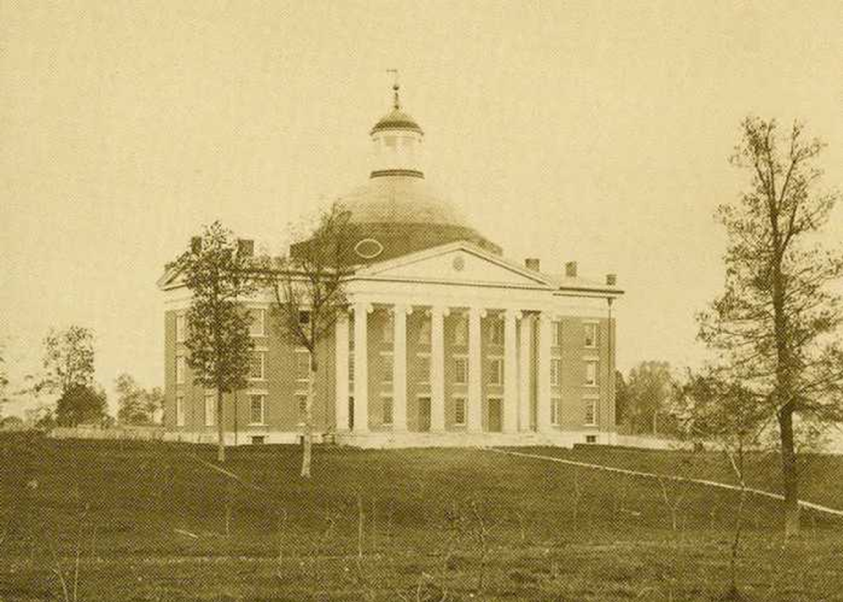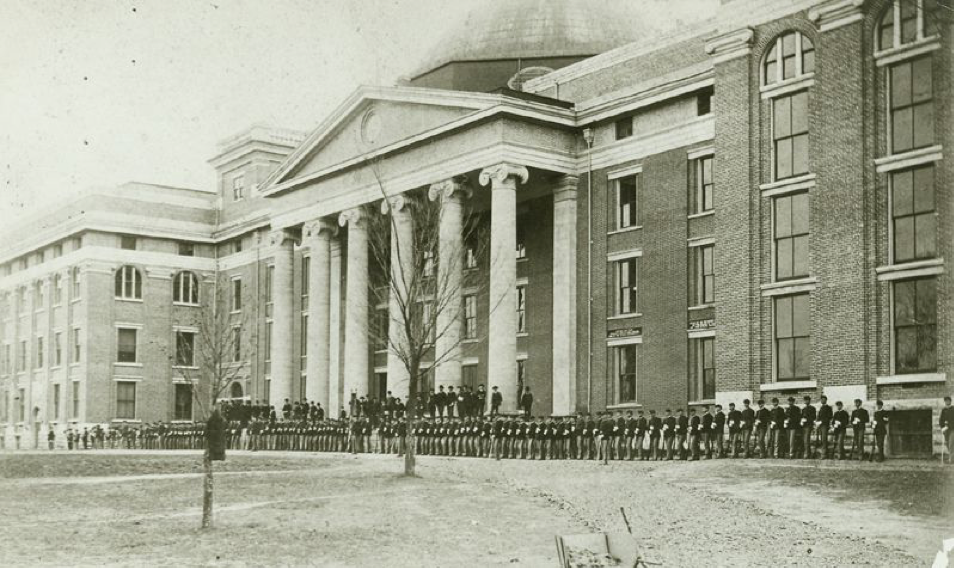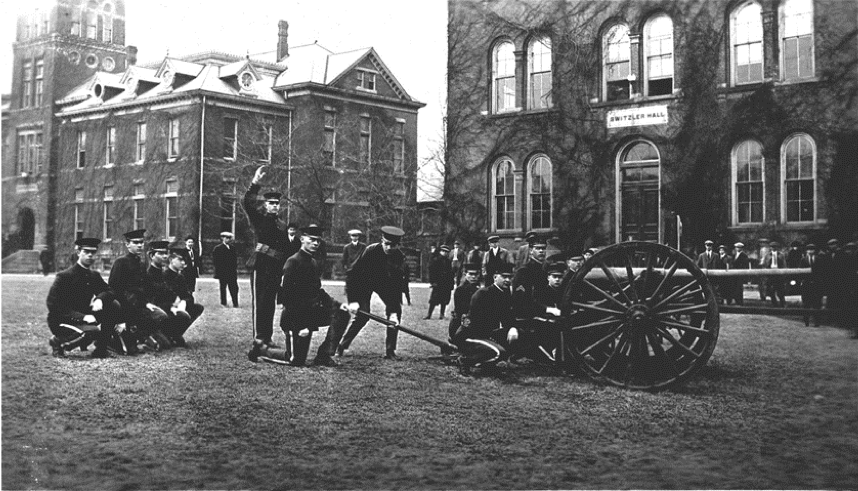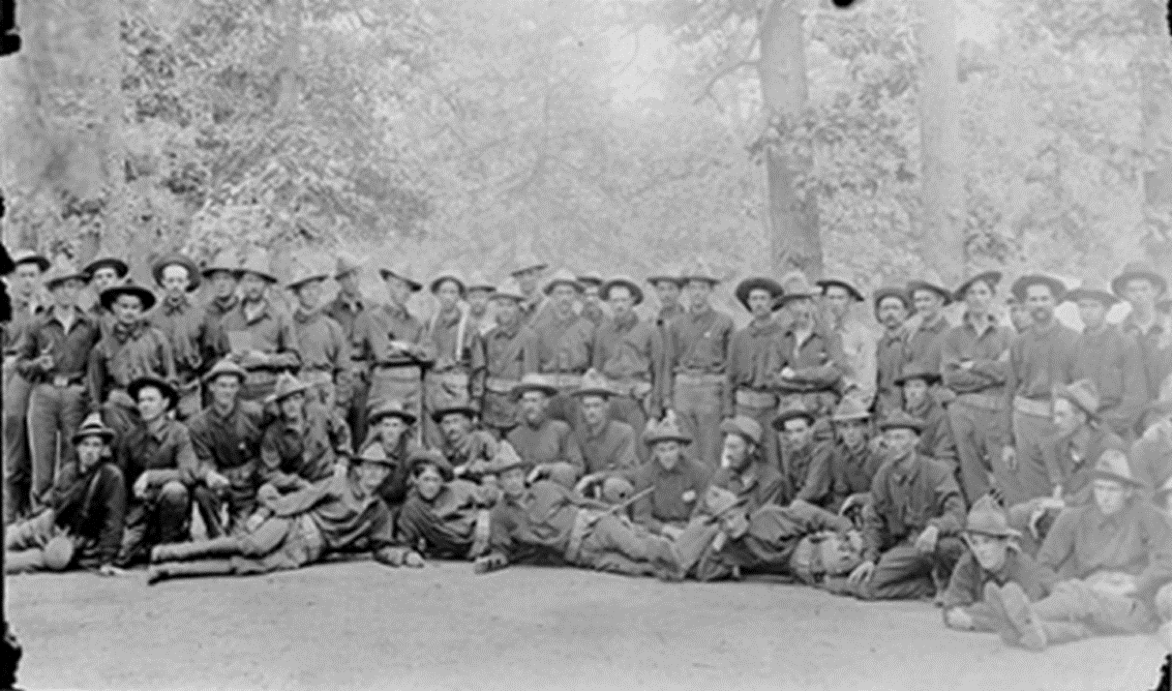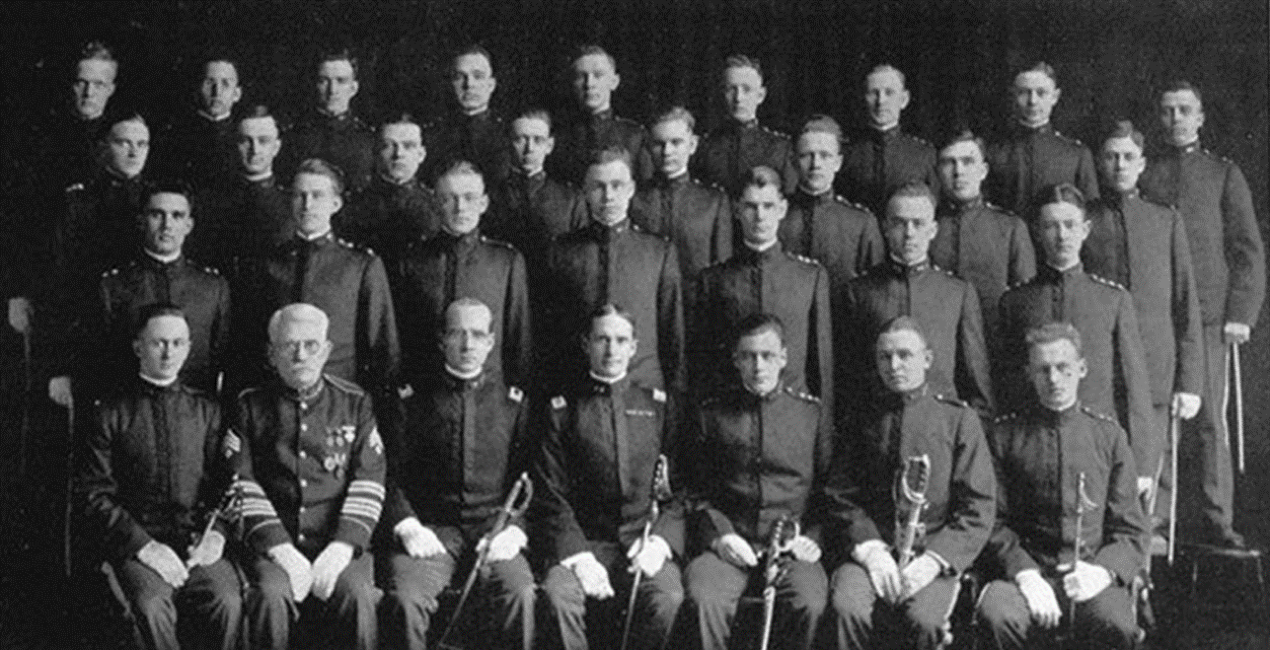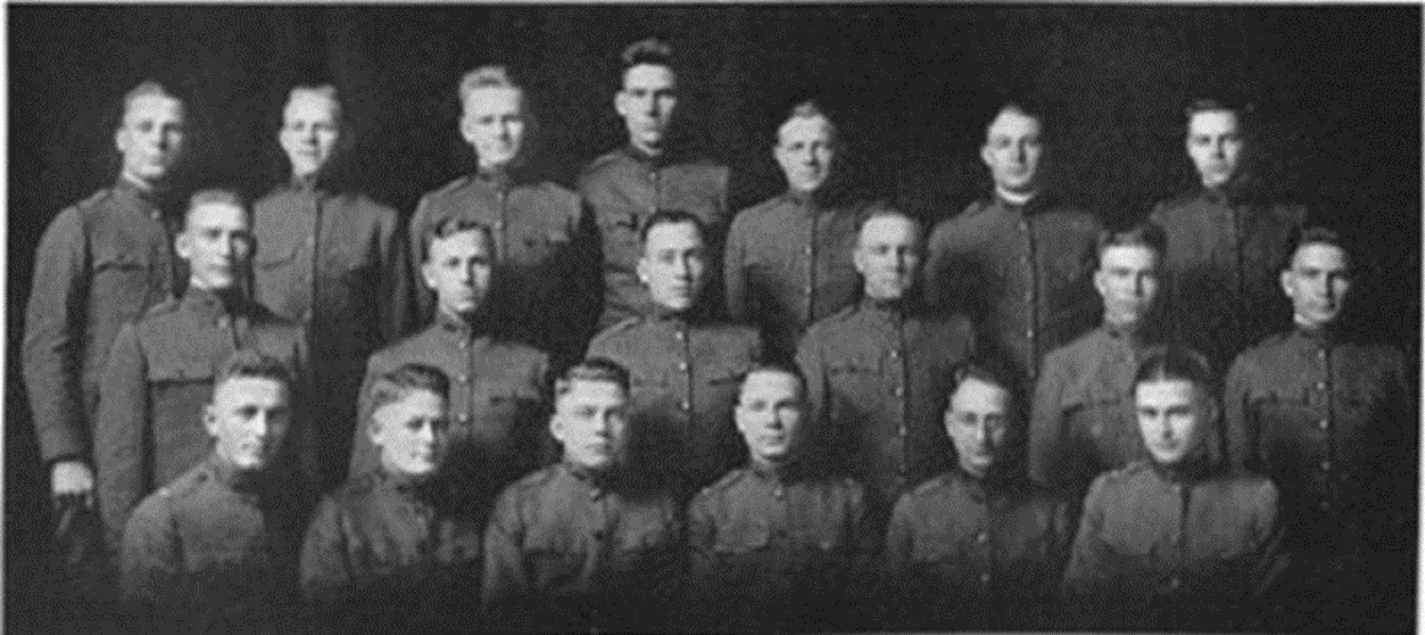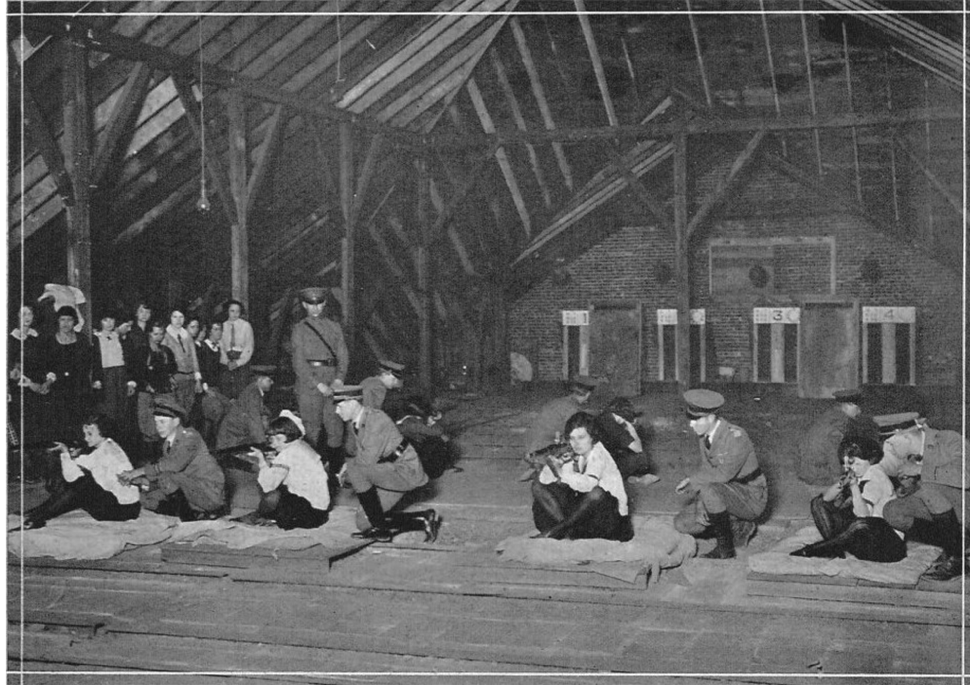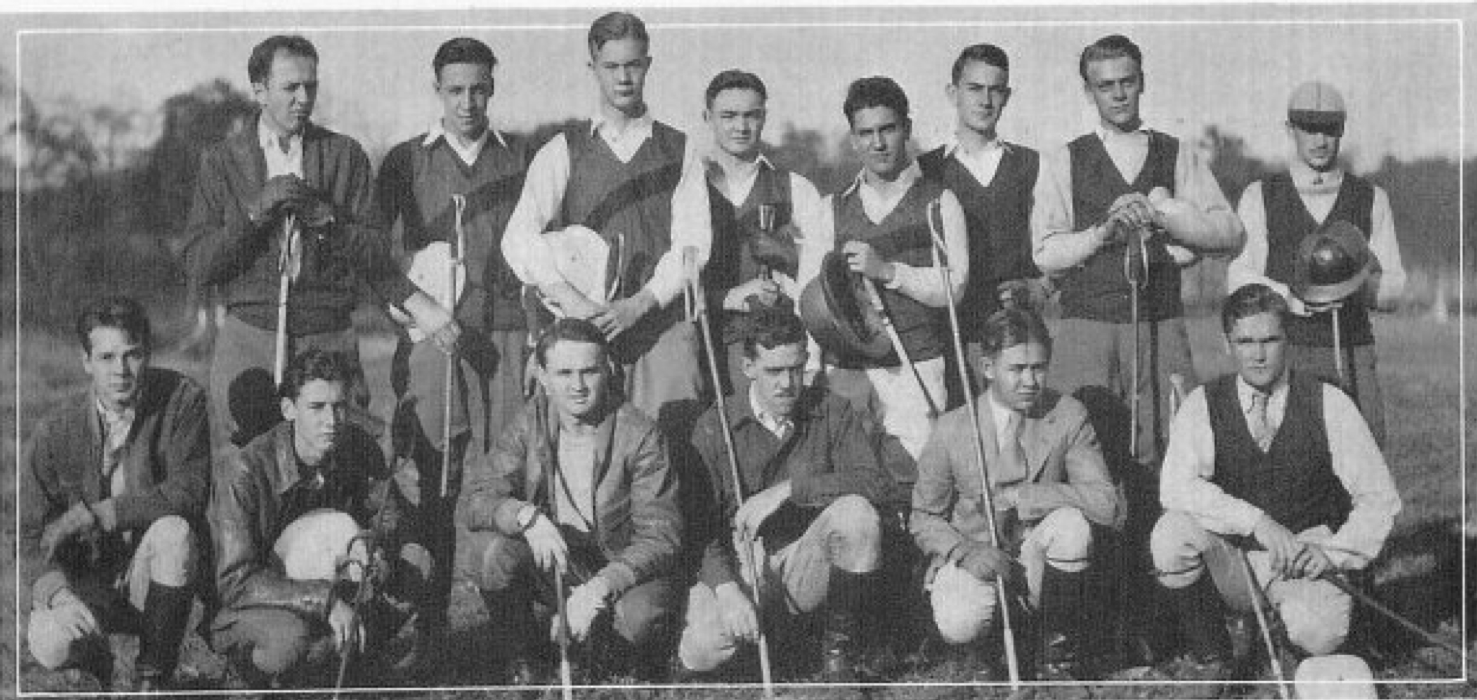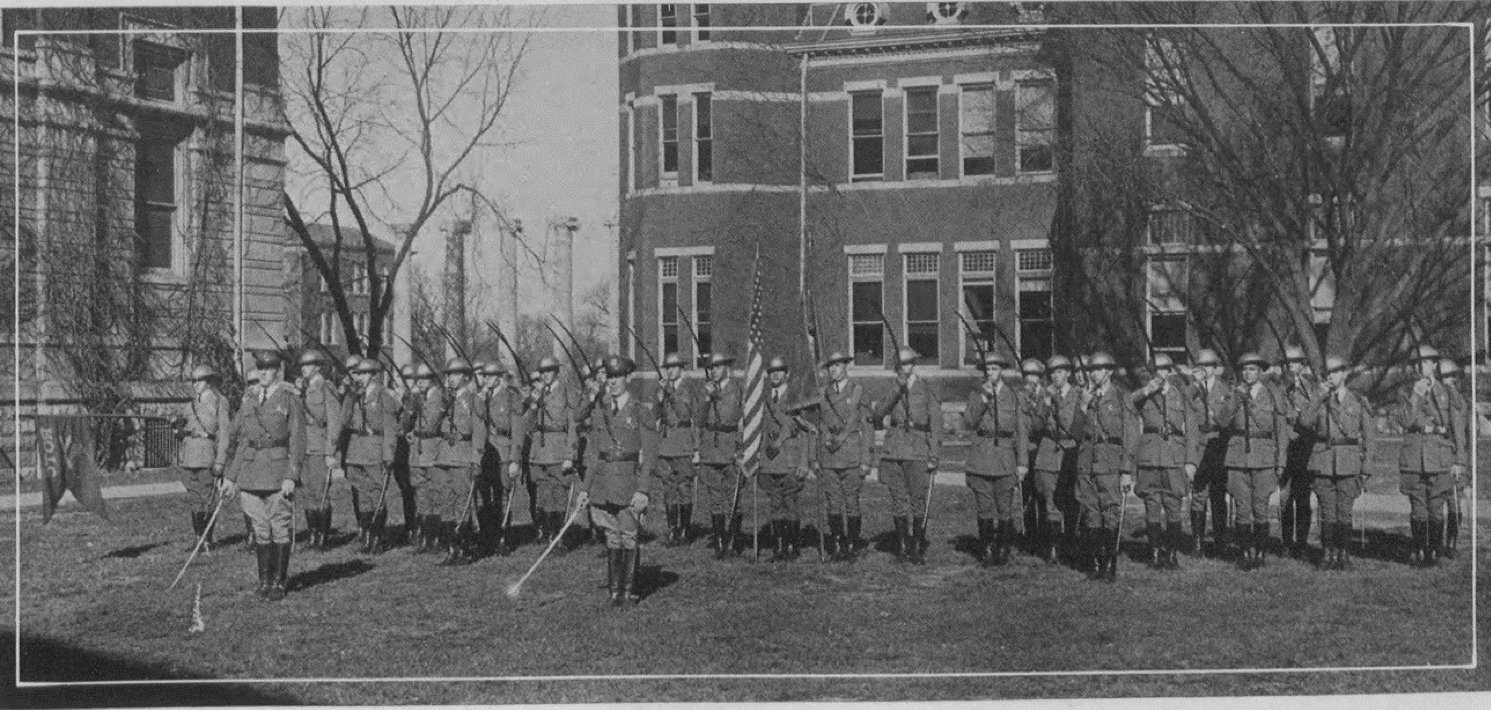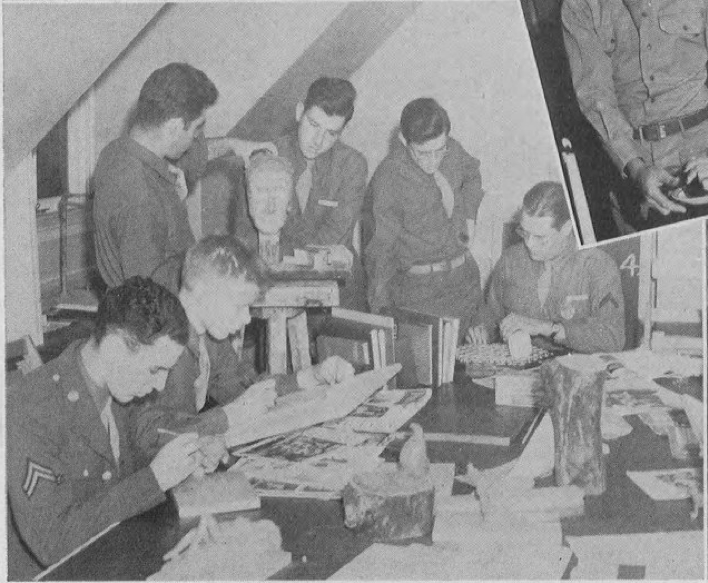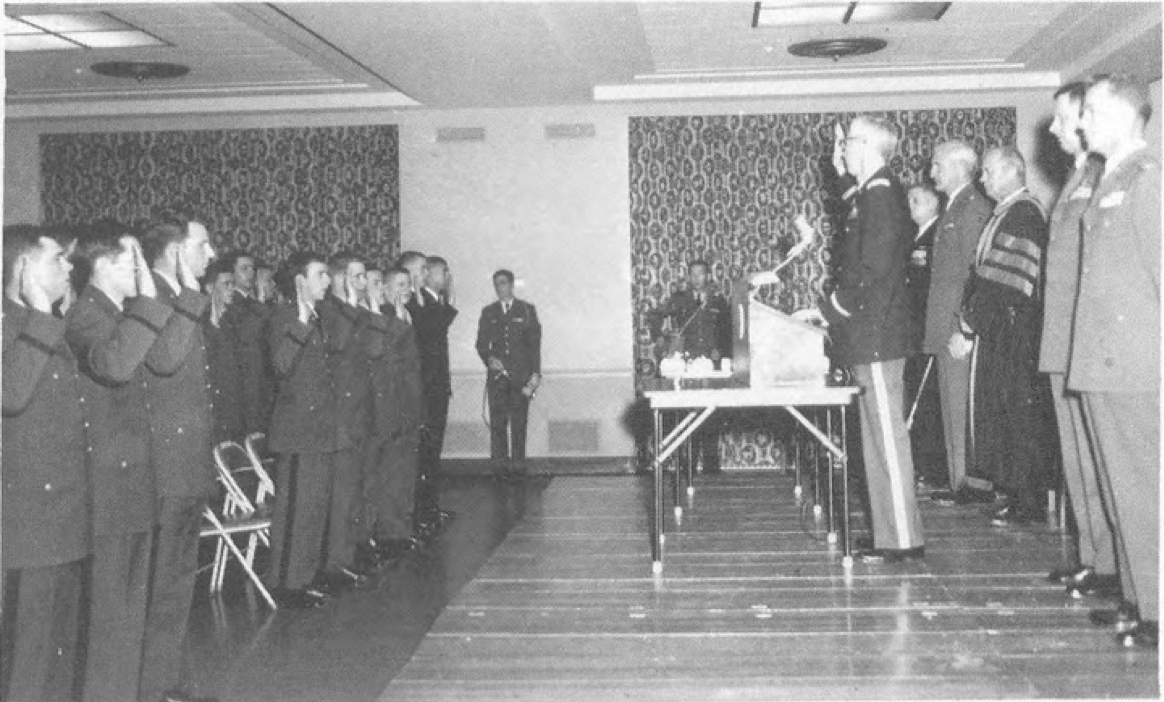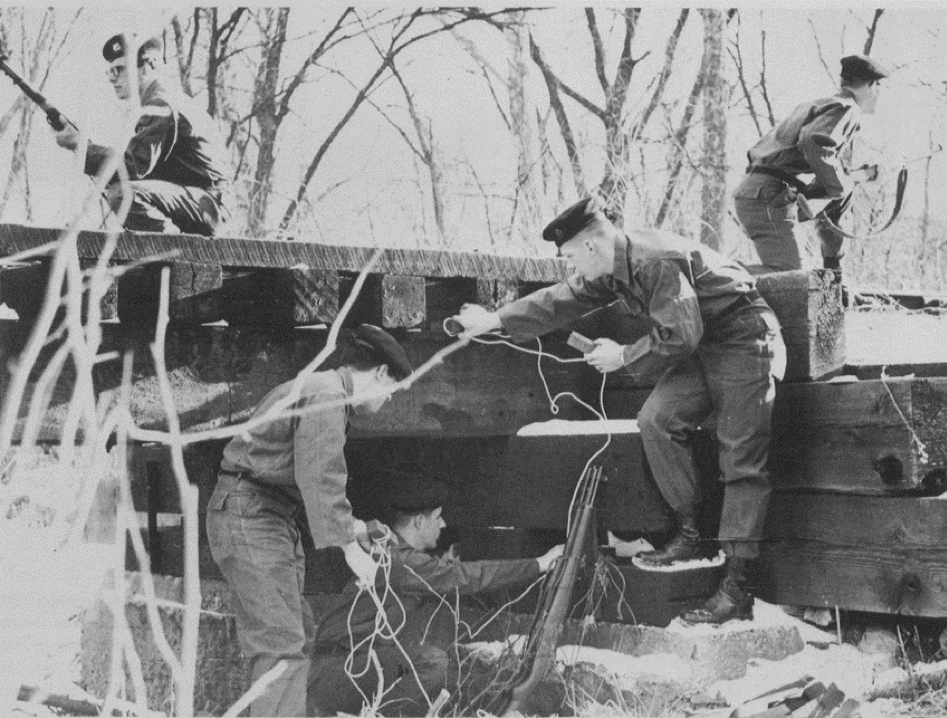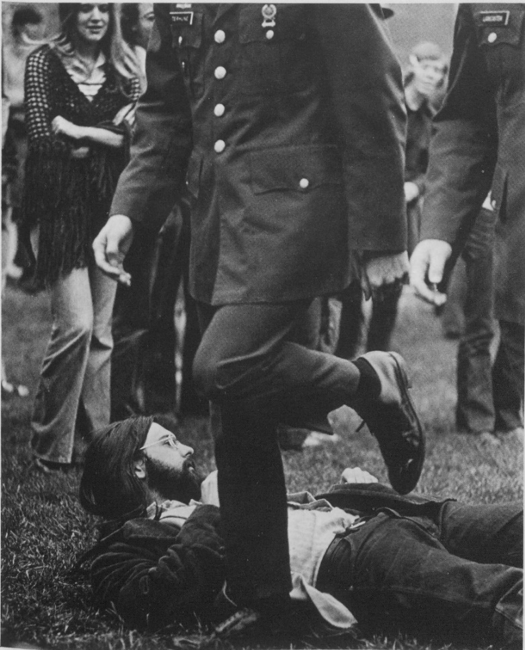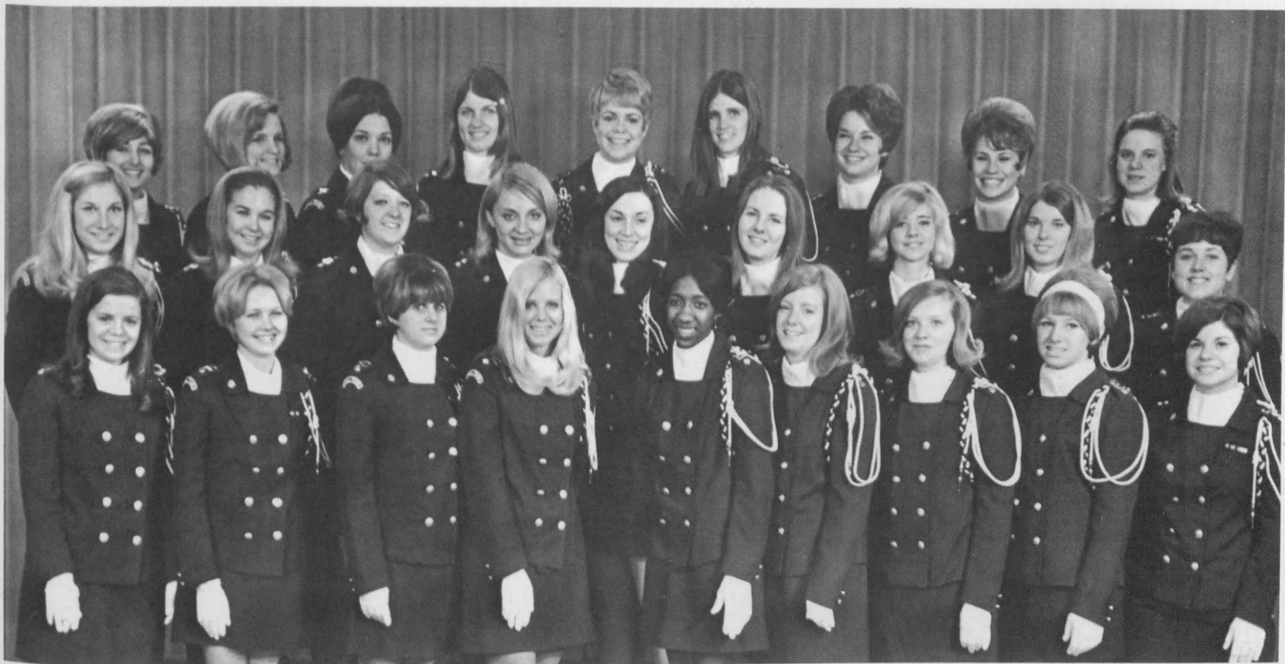In order to establish the public school system and the University of Missouri, the Missouri State Legislature passed the Geyer Act. Nine hundred Boone County citizens pledged $117,921 ($3.2 million in 2018) in cash to locate the new school in Columbia. They won the bid, and the university became the first public school west of the Mississippi River and the first in the Louisiana Purchase.
Pictured is Academic Hall, the original main building on the University of Missouri’s campus. It burned down in 1892 due to an electrical fire, leaving only the stone columns standing. These columns still stand today as a symbol to the perseverance of the University.
